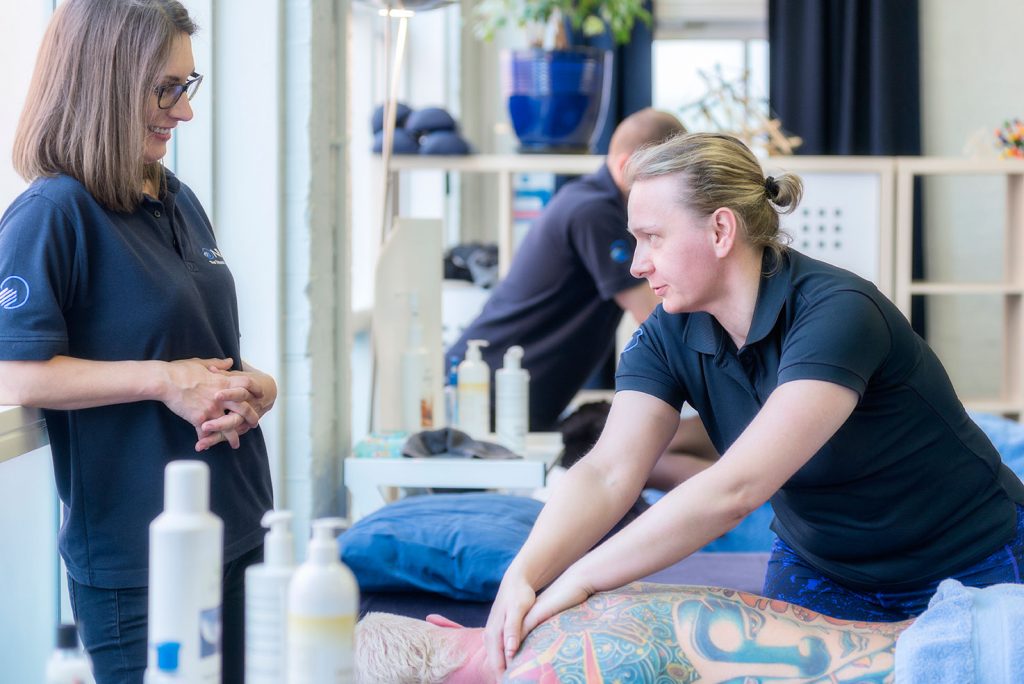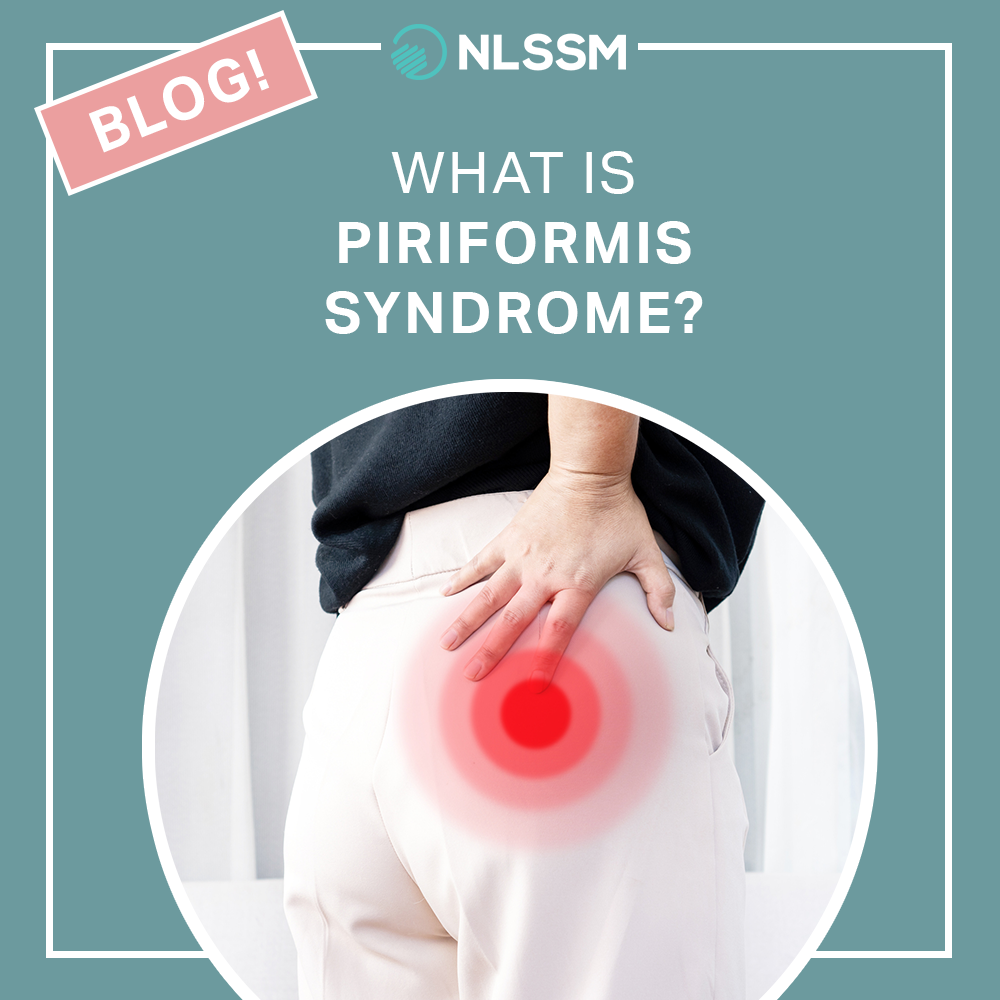In short, Piriformis Syndrome itself is characterised by a combination of symptoms including pain in the lateral hip/buttock region (1). This is caused by irritation or compression of the Static nerve from the piriformis muscle, but should not be confused with Sciatica!
Subjective and objective testing is key and will help determine if the sciatic nerve is irritated due to compression by the Piriformis muscle.
Anatomy of the Piriformis
 It is a pear-shaped muscle located deep in the lateral portion of the hip. In Latin it translates to pirium, meaning pear (2), which makes complete sense since this muscle is pear-shaped!
It is a pear-shaped muscle located deep in the lateral portion of the hip. In Latin it translates to pirium, meaning pear (2), which makes complete sense since this muscle is pear-shaped!
It is a funny little muscle with a number of functions, which are dictated by the position of the femur. This is due to its place of origin and insertion: the front surface of the sacrum, and inserts onto the greater trochanter of the femur. It’s not satisfied with just one job but four!
- External / Lateral rotation of the thigh at the hip joint – when the hip joint and femur are in a neutral position, extended or in a flexed position that is less than 60 degrees
- Internal/Medial rotator of the thigh at the hip joint – this will occur when the hip joint is flexed further than 60 degrees
- Abduction of the hip joint – can only happen when the hip is in flexion
- Stabilisation of the hip joint! Simple as that
Fun fact: Internal rotation of the hip is super important at end-of-range squats. If you are not able to engage internal rotation, you risk overloading the knees and not being to keep your feet turned out.
The piriformis is often blamed for a lot of issues around the hip. Remember though, there are 11 muscles in total that are involved in the external rotation of the hip. The piriformis is just one of them and also relatively tiny compared to some of the others.

Video Demonstrations
We’ve got not one, not two, but THREE videos demonstrating a few tips on how to administer MET to this complex little muscle!
What are the reasons to use MET with the Piriformis?
- The piriformis is deep in the lateral portion of the hip and can be quite painful to access with manual pressure. Especially if the client is experiencing central sensitisation
- This is a non-invasive way to help affect the muscle
- You are helping to encourage proprioception and what the body will deem as a ‘safe’ movement
But before MET….test the range of motion available at the hip. Remember to include both sides to compare.
Video 1
Our first video here looks at Post Isometric Contraction (PIR) with the hip in neutral – in this positon the Piriformis is an External/Lateral rotator.
Here are the steps:
1. Hip is in neutral which means you will need to internally rotate the hip to stretch the piriformis
2. Find your first ‘bind’ or subtle point of resistance
3. Ask the client to push the lateral aspect of their ankle into your hand – this should be gentle. Enough to fire up a subtle contraction. No more
4. Hold for 10 seconds then ask the client to release the contraction
5. You have up to 10 seconds to move the thigh/hip to its next ‘bind’. Hold for 10 seconds in this new position
6. Repeat steps 3, 4 and 5 a couple of more times. In the last bind, you hold the position in its new position for 20 seconds
Video 2
This video is looking at Post Isometric Contraction with the Hip in Flexion – piriformis is an internal/medial rotator.
Here are the steps:
1. The hip is in flexion at 90 degrees and then taken into gentle external rotation until you find your first bind
2. Ask the client to push the lateral aspect of their knee into your hand, gently.
3. Hold for 10 seconds then ask the client to release the contraction
4. You have up to 10 seconds to move the thigh/hip to its next ‘bind’. Hold for 10 seconds in this new position
5. Move the hip into further addiction and external rotation until you feel the next ‘bind.
6. Repeat steps 2, 3, 4 and 5 until you reach the final bind and hold there for 20 seconds in a relaxed position.
Video 3
Reciprocal Inhibition with the hip in neutral – Piriformis as an External/Lateral rotator.
- Before MET….Test the both active and passive pain free range of motion available at the hip. Remember to include both sides to compare.
- What is Reciprocal Inhibition? Just one of many types of MET, we tend to look at Reciprocal as being help from the opposing muscle and Inhibition as ‘switching off the targets muscle’. We know you never truly switch muscles off but we can lessen its involvement.
- In simple terms Reciprocal Inhibition means when we gently contract the opposing muscle the switching off of our target muscle occurs. At this point, we can change the muscle’s overall length.
Here are the steps:
1. Hip is in neutral which means you will need to internally rotate the hip to stretch the piriformis.
2. Find your first ‘bind’ or subtle point of resistance.
3. Ask the client to push the MEDIAL aspect of their ankle into your hand – this should be gentle. Enough to fire up a subtle contraction. No more!
4. Hold for 6-7 seconds then ask the client to release the contraction.
5. As soon as the contraction is released you internally rotate the thigh/hip to its next ‘bind’ and hold for 10 seconds in this new position.
6. Repeat steps 3, 4 and 5 a couple of more times until you make no further gains in ROM. In the last bind, you hold the position in its new position for 20 seconds.
References
- https://www.ncbi.nlm.nih.gov/books/NBK74304/
- https://en.wiktionary.org/wiki/piriformis
Continue your learning...
We cover a wide range of techniques on our Level 5 course in Sports Massage and Remedial Soft Tissue Therapy.



